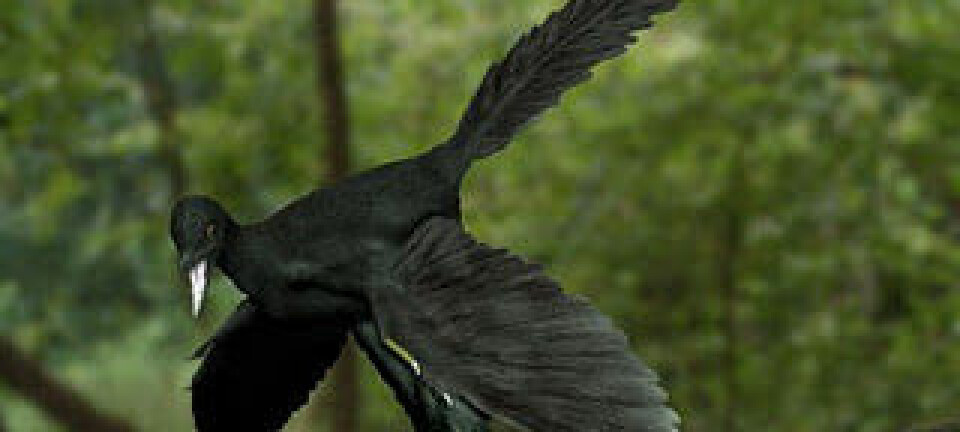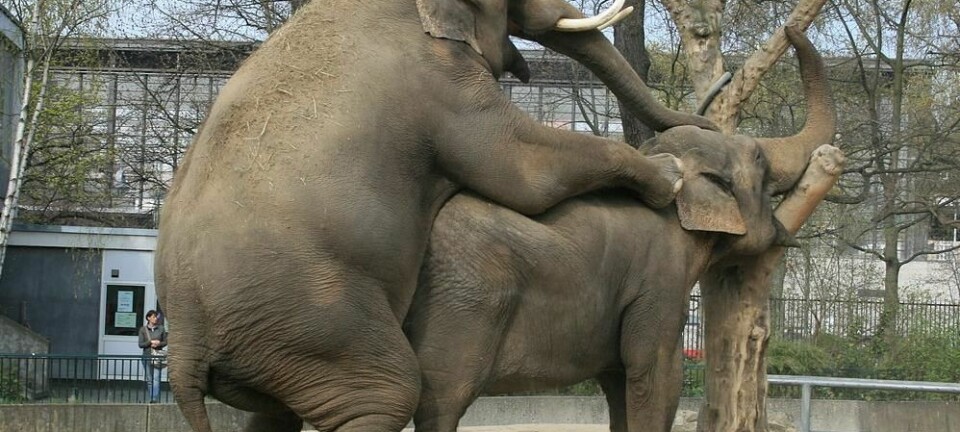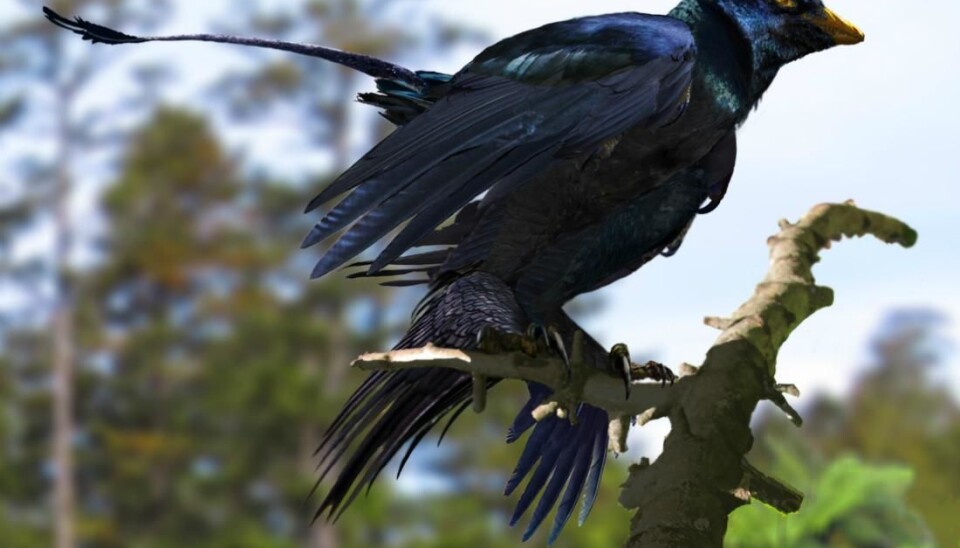
Sex made birds spread their wings
The discovery of a dinosaur with a glossy metallic plumage suggests it was sex, and not aerodynamics, that drove the evolution of dinosaur feathers and which later enabled birds to fly.
From a distance it looked like a crow, but it must have been a bad idea to get too close to it. Its beak was filled with sharp teeth and the wings were armed with ferocious claws – and its name means ‘small one who seizes’.
We’re talking about the famous Microraptor, a genus of small, four-winged dromaeosaurid dinosaurs.
Having studied a newly-discovered Microraptor fossil, researchers have now gained a fascinating new insight into the ancient bird’s colour.
And what colours they are! Its metallic glossy plumage sends the so-called iridescent colours – like the colour changes you see in soap bubbles – more than 80 million years back into the evolutionary history of the feather.
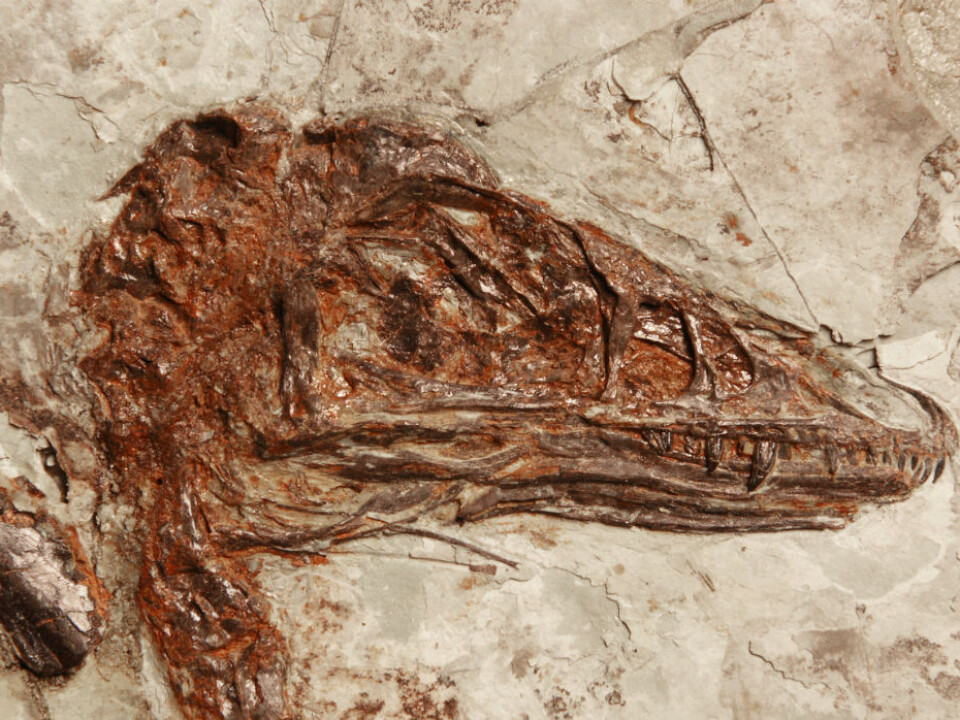
By reconstructing feathered dinosaurs, the researchers have found evidence suggesting that the colours on dinosaurs were just as highly evolved as they are on today’s birds.
“The discovery is groundbreaking because it shows that birds had a lot more in common with dinosaurs than we thought,” says Danish palaeontologist Jakob Vinther, of Texas University, USA, who conducted the new study together with his international research team.
Feather evolution driven by sexual signalling
“This reinforces our theory that signalling plays a huge role in how the feather ended up looking like it does today – and in its subsequent evolution into a flying aid.“
The study has just been published in the scientific journal Science.
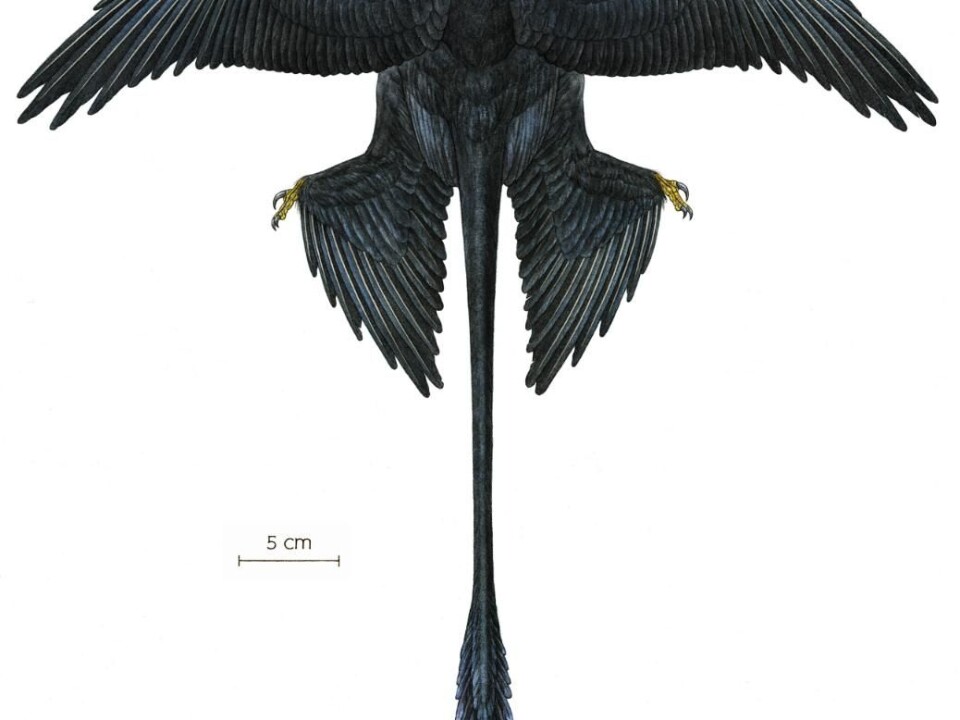
For over a century scientists have sought an answer to questions about the origin of birds and how they developed their ability to fly.
In recent decades it has become clear that birds are descendants of the dinosaurs, and that active powered flight must have evolved in a group of dinosaurs that lifted off the ground for a new life up in the air.
Most previous studies have focused on the development of the aerodynamic properties of what was once just a downy hair-like tuft, which has now developed into the broad-surfaced flight feathers we see in today’s birds.
In today’s birds the feathers play many roles, such as flying and signalling in the choice of a sex partner, but the new discovery suggests that the evolution of the feather was driven more by sexual signalling than by aerodynamics.
Reconstructing feathered dinosaurs
In 2006, Jakob Vinther had an idea which made it possible to map the colour patterns of dinosaur feathers.
He demonstrated that pigment grains in feathers can be preserved in fossils. Added with today’s knowledge about the shape and structure of pigment grains in current living birds, it’s now possible to decode the colours of the fossilised feathers with great accuracy.
“In 2010 we mapped the first dinosaur, revealing a diverse array of colours, even though its feathers were clearly not designed for flying,” says Vinther.
“The distinct colours must have acted as important signals. And the development of a broad-surfaced feather was probably based less on flying, and more on obtaining a broad surface that was able to fit in all these colours and patterns.”
Possible to predict colours of other birds
The researchers have now fine-tuned their method, and their latest discovery is that they can also predict other glossy metallic plumages such as those on peacocks, magpies, mallard drakes and numerous other birds.
The iridescent play of colours arises when the pigment grains are tightly organised in ‘stacks’, and the team has discovered that the grains also stand out as being narrower and with a larger surface than other pigment grains.
Metallic colours previously only observed in birds
Interestingly, the metallic colours are often associated with mating behaviour. But up to now the colours have been regarded as an evolutionary trait reserved for birds only, with the oldest known iridescent feather dating back some 47 million years.
The Microaptor fossil is estimated to be around 130 years old and was recently discovered in the Western Liaoning Province in China.
Using a scanning electron microscope, Vinther has examined pigment grains from a total of 26 feathers, which were located all over the dinosaur’s body.
The images reveal distinct pigment grains characteristic of a glossy metallic black colour, presumably with a slight blueish tint.
Great implications on debate on origins of flight
Since its first discovery in 2002, the Microraptor has played a central part in the debate about the origins of flight.
The animal had broad flight feathers on its arms and its legs. But its bones reveal that it hasn’t been able to fly by flapping its wings, but rather it is thought to have hovered in the air.
The new discovery suggests that the Microraptor’s feathers were actually developed as an ornamental showcase, and that the bird was in the midst of developing new uses for the broad feathers.
Tail tuft was also ornamental
This hypothesis is also supported by findings from the animal’s long tail, which has a feathered tuft at the end.
According to the researchers, this tuft could have had an aerodynamic function by supporting the bird’s soaring flight. But the tail on the newly-discovered fossil is complete and reveals that the 12-14 feathers have been scattered rather than overlapped, and that two of the feathers point out further backwards than the others.
Together with the new colours, this indicates that the tail tuft actually had an ornamental function, which the researchers believe was used in the mating game.
And according to another one of the researchers, paleontologist Julia Clarke, also of Texas University, other recent discoveries have revealed that “ornamentation of the rear end has been very common among dinosaurs.”
”Sexual selection and the tail could have remained the constant factors throughout the fantastic transitional process into flight,” she says.
Sex first, flight later
All this is contributing to a new picture of the origin of the feather, whose main evolutionary driving force has been ornamentation and sexual signalling, while the feather’s aerodynamic function and its flying abilities have emerged at later evolutionary stages.
“We’re now hoping to study more dinosaurs, go further back in their genealogical table and state with more accuracy when the colour schemes became complex.”
-----------------------------------
Read this article in Danish at videnskab.dk
Translated by: Dann Vinther
Scientific links
External links
- Jakob Vinther's website
- Documentary about the Microraptor
- About the Microraptor (Wikipedia)
- About iridiscence (Wikipedia)
